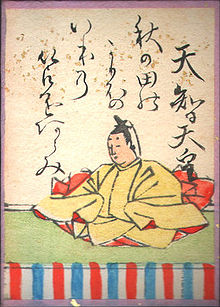The Japanese Emperor have been called “the Great One” or “the Heavenly Child” by the people of Japan and they are known to be the descendants of divine figures in the ancient Japanese myth. One of the reasons why the Japanese people always respected the Japanese Emperor is the constant prayer he offered on behalf of the people.
There is the most important ceremony conducted by the Japanese Emperor called “Shihouhai” or “Yohouhai” on January 1st. It means “the prayer to the four directions” or “the prayer for the world (yo).” Other ceremonies at the Imperial Palace can be conducted by others but this particular one can be only conducted by the Emperor himself. The contents of this prayer have been a well kept secret for a long time. However, in the recent years, the words used during this ceremony have been revealed to the public.
Before dawn on the New Year’s day out in the cold, the Emperor calls in the divinities and pray for the people.
Please have all threats go through my body first.
Please have all poisonous evil through my body first.
Please have all poisonous energies and negative intentions go through my body first.
Please have all suffering and calamities go through my body first.
Please have all natural disasters go through my body first.
Please have all conflicts go through my body first.
Please have all the wars go through my body first.
Please have all the curses go through my body first.
Historically, the Emperors of Japan felt personally responsible for what happened in the country including natural disasters. The 56th Emperor Seiwa (AD 850-881) has stated that “Disasters do not occur by coincidence. It is all because of the lack of virtue in myself” after a flood occurred in Kumamoto.
Even when someone was planning to kill the Emperor, he still thought it was his responsibility. The Emperor Meiji has created the following poem after Kotoku Shusui (1871-1911) , a socialist and an anarchist was arrested for planning to assassinate the Emperor himself.
If there was a sin committed by him, Amatsu God of Heaven, please punish myself. What my people did is my fault since he is one of my own children. – Emperor Meiji
罪あらば 我を咎めよ天津神 民はおのれの 生みし子なれば – 明治天皇 御製
Although these stories did not usually make newspaper headlines, it has been a common knowledge of the Japanese people that the Emperor’s traditional role is to pray for the peace and happiness of the people.

